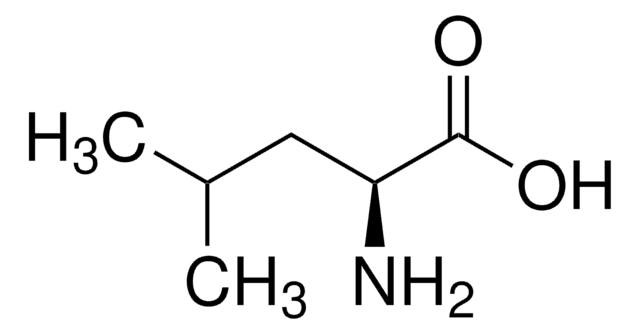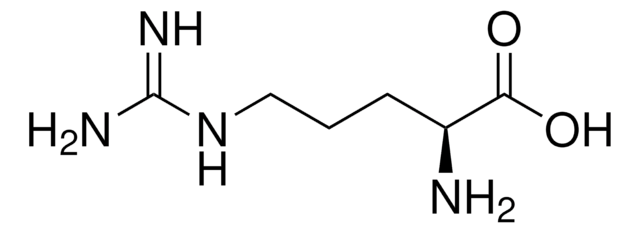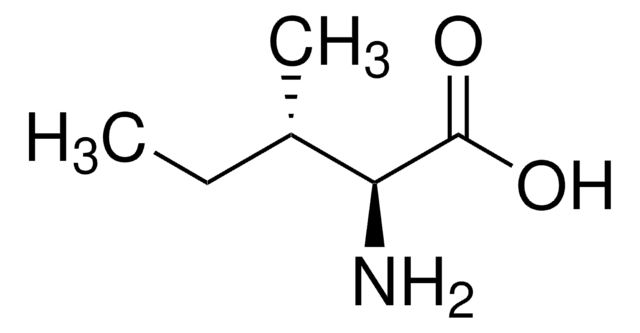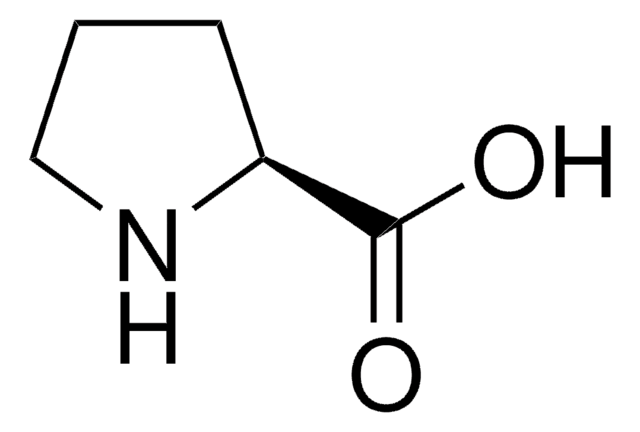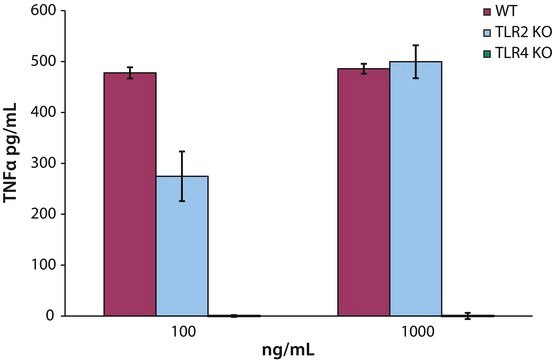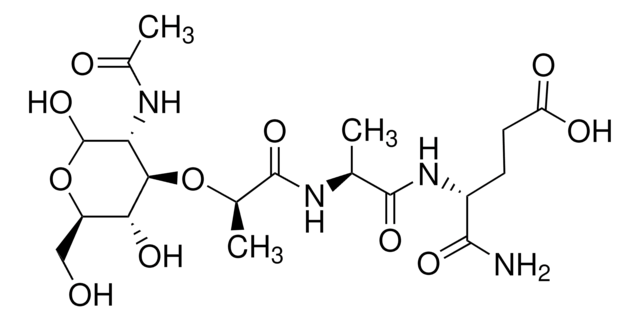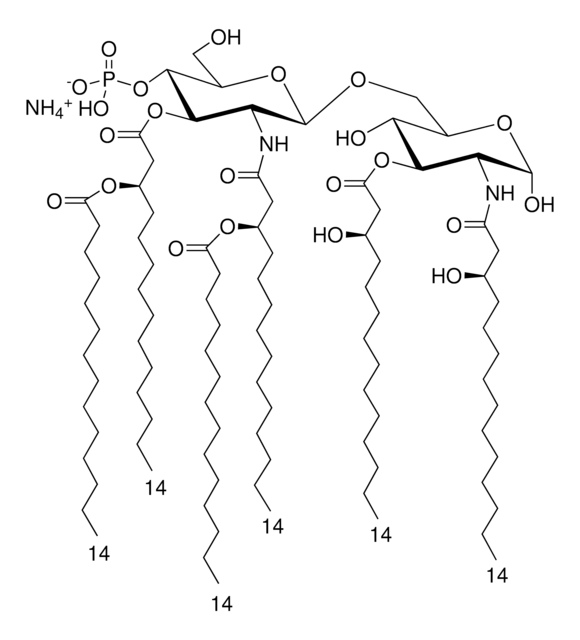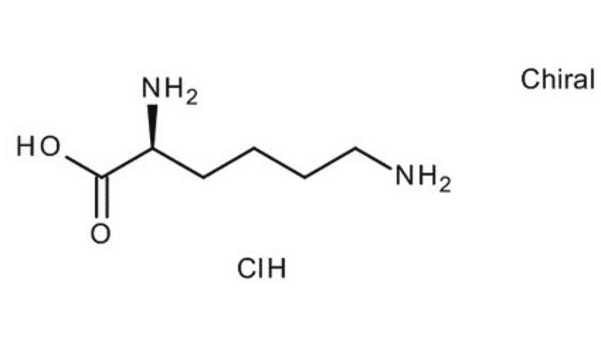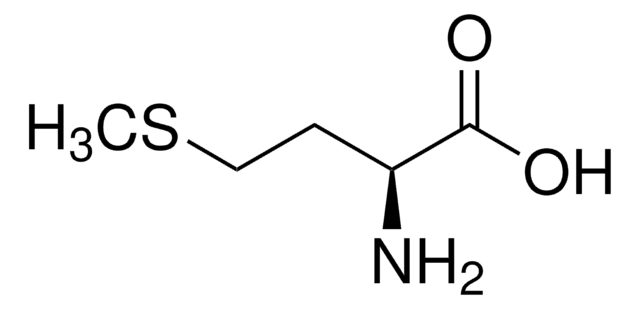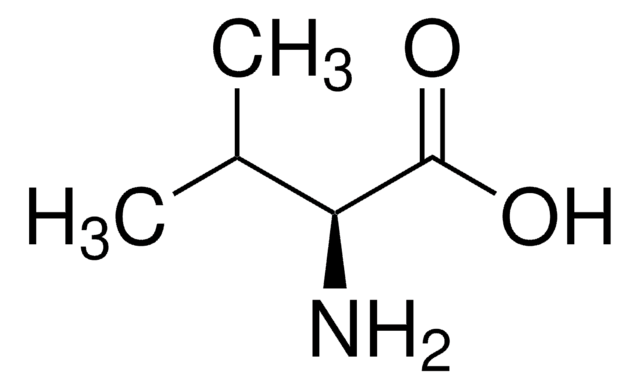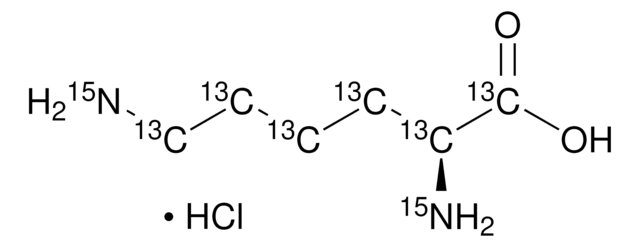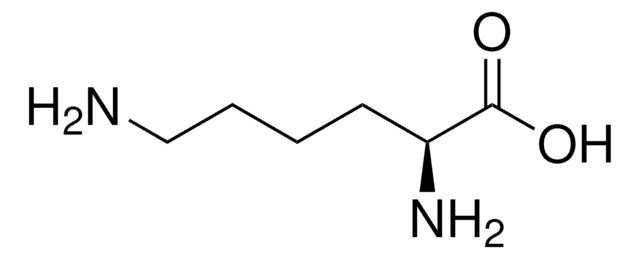L8662
L-Lysin -monohydrochlorid
from non-animal source, meets EP, JP, USP testing specifications, suitable for cell culture, 98.5-101.0%
Synonym(e):
(S)-2,6-Diamino-hexansäure -monohydrochlorid
About This Item
Empfohlene Produkte
Biologische Quelle
non-animal source
Qualitätsniveau
Agentur
meets EP testing specifications
meets JP testing specifications
meets USP testing specifications
Assay
98.5-101.0%
Form
powder
Qualität
meets EP, JP, USP testing specifications
Methode(n)
cell culture | mammalian: suitable
Verunreinigungen
endotoxin, tested
Farbe
white
mp (Schmelzpunkt)
263 °C (dec.) (lit.)
Löslichkeit
H2O: 100 mg/mL
Anwendung(en)
pharmaceutical (small molecule)
SMILES String
OC([C@@H](N)CCCCN)=O.[H]Cl
InChI
1S/C6H14N2O2.ClH/c7-4-2-1-3-5(8)6(9)10;/h5H,1-4,7-8H2,(H,9,10);1H/t5-;/m0./s1
InChIKey
BVHLGVCQOALMSV-JEDNCBNOSA-N
Suchen Sie nach ähnlichen Produkten? Aufrufen Leitfaden zum Produktvergleich
Verwandte Kategorien
Anwendung
- Scientific opinion on the presence of DNA in the feed additives consisting of concentrated liquid l-lysine, l-lysine monohydrochloride and concentrated liquid l-lysine monohydrochloride produced by Escherichia coliNITE BP-02917 for all animal species (METEX NOOVISTAGO).: This study explores the presence of DNA in l-lysine monohydrochloride and its variants used in animal feed, addressing safety concerns associated with genetic material in feed products (EFSA Panel et al., 2023).
- Safety and efficacy of a feed additive consisting of concentrated liquid l-lysine, l-lysine monohydrochloride and concentrated liquid l-lysine monohydrochloride produced by Escherichia coliNITE BP-02917 for all animal species (Metex NoovistaGo).: Evaluates the safety and efficacy of l-lysine monohydrochloride in animal feed, contributing to a better understanding of its use and regulatory compliance (EFSA Panel et al., 2022).
- Safety and efficacy of a feed additive consisting of l-lysine monohydrochloride and l-lysine sulfate produced by fermentation with Corynebacterium glutamicumCGMCC 17927 for all animal species (Barentz Animal Nutrition B.V.).: This publication assesses the safety and effectiveness of l-lysine monohydrochloride and l-lysine sulfate in various animal feeds, ensuring they meet health and nutritional standards (EFSA Panel et al., 2022).
- Safety and efficacy of a feed additive consisting of l-lysine monohydrochloride and l-lysine sulfate produced by Corynebacterium glutamicum CGMCC 14498 for all animal species (Kempex Holland BV).: Investigates the implications of using l-lysine monohydrochloride and l-lysine sulfate in feed, focusing on their impact on animal health and growth (EFSA Panel et al., 2021).
- Safety and efficacy of the feed additives concentrated liquid l-lysine (base) and l-lysine monohydrochloride produced by Corynebacterium glutamicum KCCM 80183 for all animal species (CJ Europe GmbH).: Analyzes the safety and benefits of concentrated liquid l-lysine and l-lysine monohydrochloride, detailing their advantages and regulatory approval for use in feed (EFSA Panel et al., 2021).
Lagerklassenschlüssel
11 - Combustible Solids
WGK
WGK 1
Flammpunkt (°F)
Not applicable
Flammpunkt (°C)
Not applicable
Persönliche Schutzausrüstung
Eyeshields, Gloves, type N95 (US)
Analysenzertifikate (COA)
Suchen Sie nach Analysenzertifikate (COA), indem Sie die Lot-/Chargennummer des Produkts eingeben. Lot- und Chargennummern sind auf dem Produktetikett hinter den Wörtern ‘Lot’ oder ‘Batch’ (Lot oder Charge) zu finden.
Besitzen Sie dieses Produkt bereits?
In der Dokumentenbibliothek finden Sie die Dokumentation zu den Produkten, die Sie kürzlich erworben haben.
Kunden haben sich ebenfalls angesehen
Unser Team von Wissenschaftlern verfügt über Erfahrung in allen Forschungsbereichen einschließlich Life Science, Materialwissenschaften, chemischer Synthese, Chromatographie, Analytik und vielen mehr..
Setzen Sie sich mit dem technischen Dienst in Verbindung.